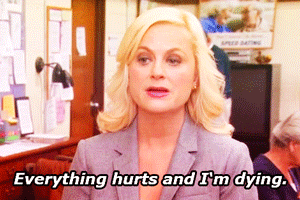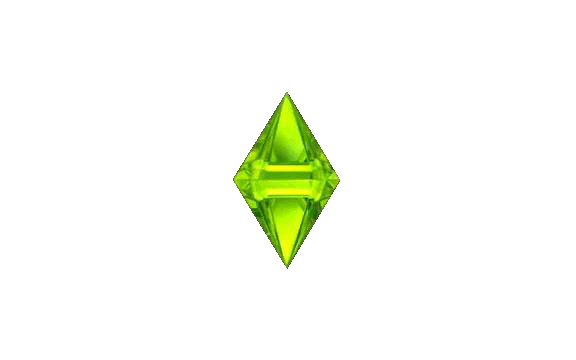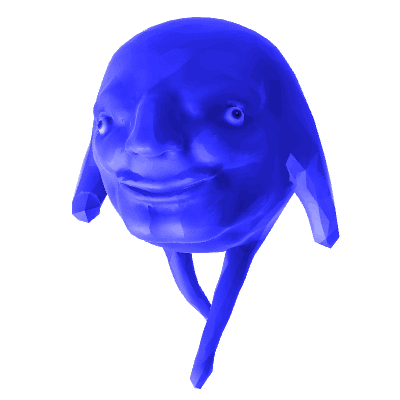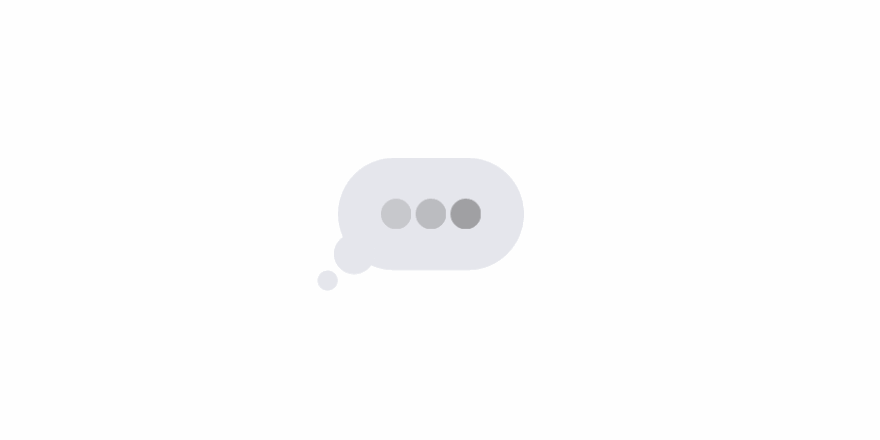> What is post-internet?

As ~Slavoj Zizek~ (ikr, sorry) declares, ‘I already am eating from the trash can all the time.’ We live in a culture saturated by throwaway discourse: public transport advertising, corporate PR, social media squabbles, flowery specifications for crap jobs. Our online and IRL everyday floats on an infinite stream of textual detritus.
We believe to be entering the metamodern phase in which the monstrous Chthulucene of self-devouring irony and the reduplication of signs and slogans find an inseparable companion in new constructive sincerity, in the need for wholesomeness and reciprocal care. Unlike most publications, SPAM does not ask its contributors to choose one pole over the other. We acknowledge our generation’s need to constantly move between pretence and eagerness, between the absolute and the relative, between optimism and cynicism - never having or wanting to choose.
Like the artist Luke Turner, we, too, ‘recognise oscillation to be the natural order of the world.’ Our contributors represent a generation raised on the anxiety of a culture deprived of structure, stability and origin. SPAM provides a DIY platform for writers, artists and musicians to work through the frustrations of the times as much as unfolding the everyday weirdness, joy, and bipolarity of our contemporary condition.






“The utopian ideal of the internet—unregulated access to information, pure connectivity—now feels antiquated. Also antiquated: trying to determine if the internet is simply good or bad. Possible and necessary: thinking more deeply about how it’s rewiring our brains and warping our experience of time, about the vistas of reality it’s revealing and creating, and what to do with our positions therein, so that we do not go mad from it all nor flee altogether.
When the internet was less mobile, the distinction between online and offline was perhaps more defined. There was real life, and then there was the place that hosted our reflections on it. Now we are experiencing a collision between underbaked thought and tangible experience so great and rapid and omnipresent that it’s less of a crash, more in the water supply. Those who use the internet as an escape are thought of as outliers (Catfishers, video game addicts, radicalized young men), but its increasing presence throughout our daily lives has made a state of unreality not only more accessible, but very hard to resist.
--Tavi Gevinson, Editor’s Letter, Rookie (2018)

a manifesto
a collage of possibility

'We are shown how to fashion masks of ennui and jaded irony at a young age where the face is fictile enough to assume the shape of whatever it wears. And then it’s stuck there, the weary cynicism that saves us from gooey sentiment and unsophisticated naïveté. […] What passes for hip cynical transcendence of sentiment is really some kind of fear of being really human, since to be really human (at least as he conceptualizes it) is probably to be unavoidably sentimental and naïve and goo-prone and generally pathetic.'
DFW, infinite jest, p694


1. Negotiation between modernism and postmodernism
2. Dialogue over dialectics
3. Paradox
4. Juxtaposition
5. The collapse of distances
6. Multiple subjectivities
7. Collaboration
8. Simultaneity and generative ambiguity
9. Optimistic response to tragedy by returning, albeit cautiously, to metanarratives.
10. Interdisciplinarity.




2020
poetry
Against the distinction that Nathan Jurgensson <3 calls 'digital dualism':
'This brief essay attempts to link two conceptualizations of the important relationship of the on and offline. I will connect (1) my argument that we should abandon the digital dualist assumption that the on and offline are separate in favor of the view that they enmesh into an augmented reality and (2) the problematic view that the Internet transcends social structures to produce something “objective” (or “flat” to use Thomas Friedman’s term).'






‘Kanye in fox fur at the urinal’
- Harmony Holiday, Hollywood Forever

‘Irritating things. Irrelevant things. Irreverent things. Irrevocable things. But I’m afraid of erasure. The wiped drive of my mind. I know I know nothing. There’s less and less to understand every day. Information ground into digital dust. The world stopped making sense a long time ago.’
- Sophia Al-Maria, Sad Sack (2018)
On the theme of gender and the post-internet
How to go beyond a modernist boys club?



Anna Swann-Pye, ‘Kourtney & Khloe Take Karbon Footprinting: A Research Project’
HB: When you mention that Buchloh thing about people saying "how could a woman do this kind of work?" my initial response is that it's really hard to think of someone making that kind of accusation now. But then I think of the ways in which postinternet is maybe similar to modernism and other kinds of art movements in that it's a boys' club. This was brought up by [curator and gallerist] Rozsa Farkas in the...
TC: ...Post-Net Aesthetics panel that Rhizome organized in October.
HB: She mentions Amalia Ulman, Bunny Rogers, and other artists who are working against that by taking a deliberate, "self-consciously feminized" craft tradition.
These artworks are quite humorous in that way—they're kind of phallic, but lying on the floor in this kind of helpless way. I like that, if people really were saying "you can't do this kind of work because [you’re a woman]."
TC: Another point Farkas made…was that there's been an assumption that deskilling is a necessary tactic for a "serious" critical artist to pursue—that skilling is somehow associated with a medium-specificity that might conjure old ghosts of modernist practice, right? But, in fact—she's looking at Rogers and Ullmann, in this case—skill is attendant to any developmental phase. If postinternet means a proliferation of possibilities of medial practice, on- or offline, it doesn't obviate the possibility, the horizon of skill. It just changes the register.
-- 'On Affectionate Sabotage and Exemplary Suffering: An Audio Guide to Isa Genzken', by Tyler Coburn and Hannah Black, rhizome.org, 5th Feb 2014
_edited.jpg)
On the theme of gender and the post-internet
How to go beyond a modernist boys club?
‘In an email discussion that was printed in TimeOut New York in 2006, she [Marisa Olson] wrote:
What I make is less art "on" the Internet than it is art "after" the Internet. It's the yield of my compulsive surfing and downloading. I create performances, songs, photos, texts, or installations directly derived from materials on the Internet or my activity there.
As critic and curator Gene McHugh has pointed out, this was an early articulation of what Olson would call a "Post-Internet" way of working. The term has since evolved considerably, sprouting an array of differing use cases that would take considerable effort to catalog in full. As a result, today one often hears the criticism that "postinternet" is a vague neologism, but for Olson, it had a specific meaning, referring to a mode of artistic activity drawing on raw materials and ideas found or developed online.’
[...]
After Olson's 2006 formulation, of course, the cultural conditions of the internet continued to change, rapidly. It's not popular, these days, to ascribe cultural shifts to the appearance of a new technology rather than shifts in perceptual regimes or economic models[3], but let's just say it: the iPhone was released in 2007. Olson's language of making art "after" being online, though surely not meant to be taken literally, initially suggested a perceived boundary between time spent online and off. This boundary was eroded with the proliferation of smartphones and the growing pressures of an attention-based economy. And so Olson's concept of making art after the internet no longer applied in the same way. There was no after the internet, only during, during, during. The artist could no longer realistically adopt a position on the outside.
In this context, it no longer makes sense for artists to attempt to come to terms with "internet culture," because now "internet culture" is increasingly just "culture." In other words, the term "postinternet" suggests that the focus of a good deal of artistic and critical discourse has shifted from "internet culture" as a discrete entity to the reconfiguration of all culture by the internet, or by internet-enabled neoliberal capitalism.
-- Michael Connor, ‘What’s Postinternet Got to do with Net Art?’ (2013)






‘the implication of uncreative writing’ on ‘minority writers’ i.e. the notion of excess language as a kind of ~fascinating textual junkspace~, indeed, the notion of the existence of any ‘waste language’ at all only functions for those individuals occupying positions of relative privilege within a hegemonic discourse—those whose demographics have had the opportunity to publicly record their thoughts.’
---Sophie Collins, The Quietus
‘the implication of uncreative writing’ on ‘minority writers’ i.e. the notion of excess language as a kind of ~fascinating textual junkspace~, indeed, the notion of the existence of any ‘waste language’ at all only functions for those individuals occupying positions of relative privilege within a hegemonic discourse—those whose demographics have had the opportunity to publicly record their thoughts.’
---Sophie Collins, The Quietus
Maybe the point of SPAM is that most of these articles on the postinternet are like 7+ years old (i.e. coinciding with the aftermath of the New Aesthetic, Net Art and early postinternet/flarf/alt-lit poetry) so our interest/purpose is to carry the legacy of that term and continually reinvent it through the fugitivity and contingency of a life lived online this long, and into the future. Life in the Vivid Dream, as Grimes would put it, is to ‘live in the world just like a stranger’ but it’s also to ask why, to keep asking ‘what do you mean?’ Postinternet means a life lived strange and also the strangeness of meaning anything. What if people weren’t doing nothing or not not doing nothing online? What is happening in the warp and weft of activism, agency and ‘Active Now’ alongside anonymity, withdrawal and fears of attention deficit? How are our politics, poetics, identities and relationality shaped by living in medias res, linked by the sultry, insidious cables, wireless signals and emoji glyphs of this time-space compression we call the now, or something more like nowness - a simmering soup of all we have said and can say to each other, from boomers to zoomers, Tiktok to Friendster, MSN to Lex, Instagram to GeoCities. Postinternet also reaches into the question, following Tom McCarthy’s Satin Island (2015), of what kind of poetics or archival possibility is offered by data itself: in the future, who will read our human data; existing as a binary undersong of 1s and 0s, can we even claim everyday language online to be fully human anymore? SPAM wields the postinternet, then, as a way of attending to the existential, sociopolitical and scalar disparities of life, language, space and time assumed as lived always already online - albeit to varying degrees of connection, access, autonomy, consumption and production. We consider the internet to be at once the banal supplementarity of existence, the ambient networks and spheres of everyday interaction, and also what Timothy Morton calls a ‘hyperobject’: something ‘massively distributed in time and space relative to humans’, so that its totality can only be grasped at local levels. The postinternet is kind of to say, we don’t even log on anymore; this is just being. What are the personal, intersubjective, aesthetic and ecological consequences of this? The postinternet is kind of to say, what would still constitute an online experience of the sublime? Is there a resistant potential in pursuing this, or staying with the sheer sense of the internet’s dailiness? Could we also go radically afk (away from keyboard); what does poetry look like offline; how can we archive, respond to, critique and create from the transient, ad-cluttered structures of Web 2.0? To some extent, SPAM is simply about putting the internet on the page, chewing it over, finding mystification and inspiration in the absurd plenitude of our quotidian data, embracing the radical potential of the glitch, questioning the ‘beyond’ of human obsolescence and finding ourselves caught between the impulse to accelerate but also find slower, more viable horizons for living and dreaming in the twenty-first century.
- SPAM Press, June 2020



GOLDEN LIVING ROOM
POST-INTERNET
2015
from Zara Dinnen's
The Digital Banal:

GOLDEN LIVING ROOM
POST-INTERNET
2015
from Zara Dinnen's
The Digital Banal:

from Zara Dinnen's
The Digital Banal:

from Zara Dinnen's
The Digital Banal:
from Zara Dinnen's
The Digital Banal:


from Zara Dinnen's
The Digital Banal:
from Zara Dinnen's
The Digital Banal:


What Cometh After Thy Internet?
Verglas Flora exuded · Virtual Fauna exposed
Crystalline Cristae, Coruscating Centrioles
Bucolic Rurality versus Bated Reality
The World Is Your Living Room








